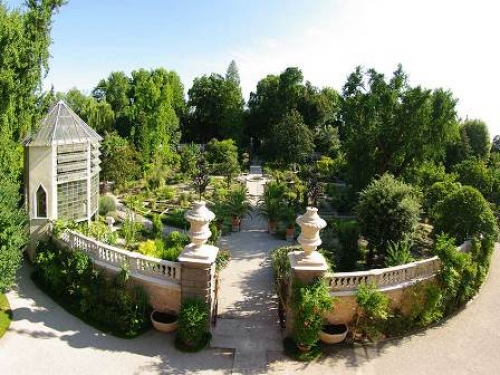The arrival of springtime presents the opportunity to discover Italian itineraries that allow visitors to fully capture the beauty of the Tuscany. The region is indeed luscious, and has an extremely various nature, housing a great heritage of both Northern mountain as well as Mediterranean flora. Nature-watching themed excursions are countless thanks to the very diverse vegetation, but also to the wealth of gardens and parks open to the public.
One suggested tour is around the Siena area, beginning with its Botanical Garden. As far back as the 500's, medicinal herbs were grown in the city's gardens to provide local hospitals and religious institutions with much needed supplies. The Orto Botanico was founded in 1856, when farmland outside of Siena's city walls was put to use for the cultivation of plants with medicinal properties. Various plants are displayed in three different sections of the garden. The first section called "the school" contains local varieties of plants used for educational purposes. A second section, "the greenhouse," contains exotic trees and shrubs, unable to withstand the local climate. A third section, "the rocky garden," is dedicated to ferns, and fruit-bearing plants, some of which are from ancient times. Admission to the Orto Botanico is free on weekdays, and a visit to this splendid green area in the heart of the city is strongly recommended.
The Val d'Orcia area is a region of Tuscany extending from the hills south of Siena to Monte Amiata. Characterized by gentle, carefully cultivated hills occasionally broken by gullies and picturesque towns or villages such as Montalcino or Pienza, it has been added to the UNESCO list of World Heritage Sites. In this area, the Lucciola Bella Nature Reserve, located southeast of beautiful Pienza, is certainly deserving of a stop. The reserve is most famous for its rocky outcrops and jutting ridges. Often used as grazing pastures, these areas are also rich in indigenous varieties of vegetation, such as the holm oak and the Lavender Cotton, also known as Santolina. Further south, bordering the province of Grosseto, lies the Pigelleto Nature Reserve dominated by Mount Amiata. The reserve protects a mixed wooded area, rich in plant species, among which the presence of silver firs as well as spontaneous species is especially relevant.
Another natural reserve, located southwest of Siena, stretches all around the entire basin of the Merse River to the province of Grosseto. While visiting San Gimignano, it is possible to plan an excursion to the Castelvecchio Nature Reserve, as it sits only a few miles westwards from this lovely town. The grounds of this protected area are covered with stunning Mediterranean scrub, while the ancient ruins of Castelvecchio provide a breathtaking view of the valley.
The colors, flavors and scents of Tuscany in the springtime are unique, and certainly worth planning a trip to enjoy these as well as many other fascinating aspects of this extraordinary Region of Italy.



